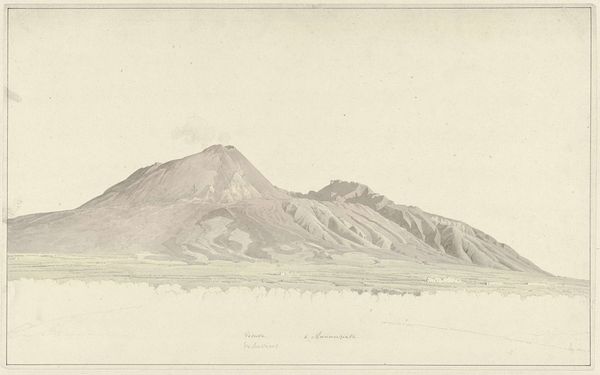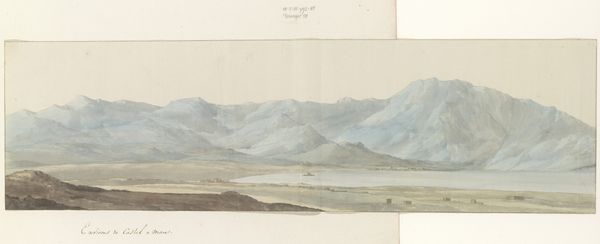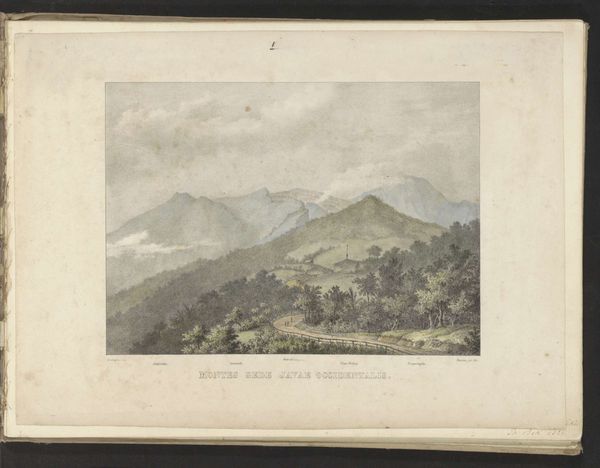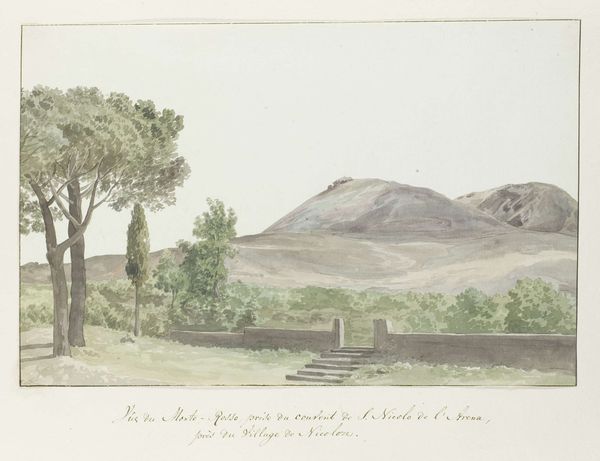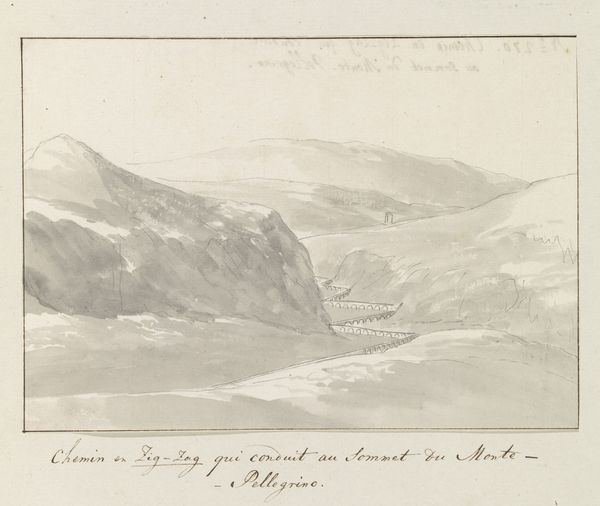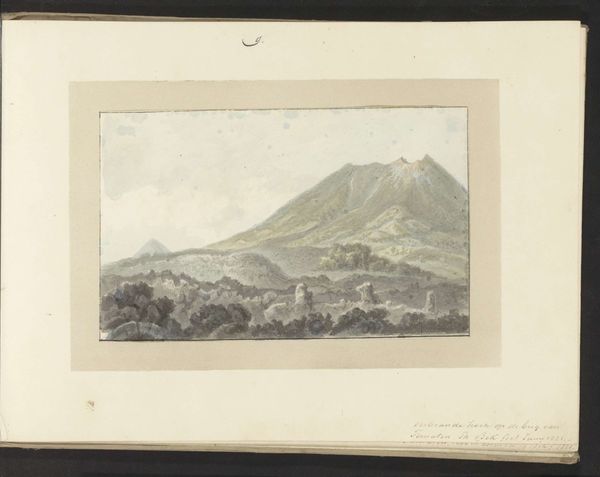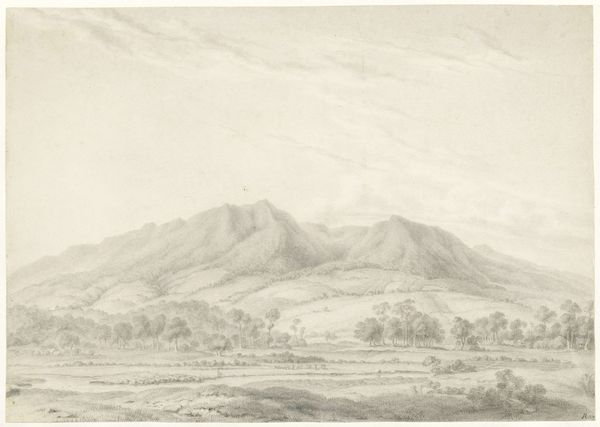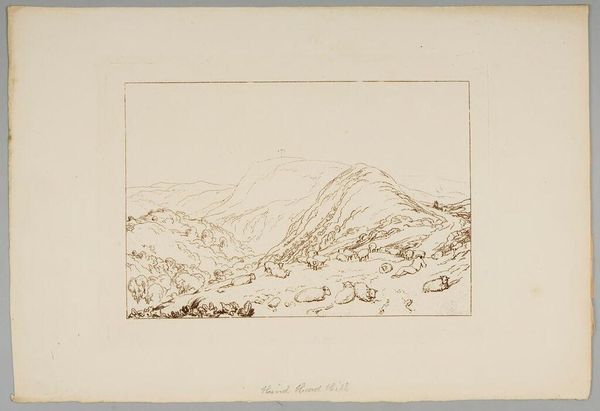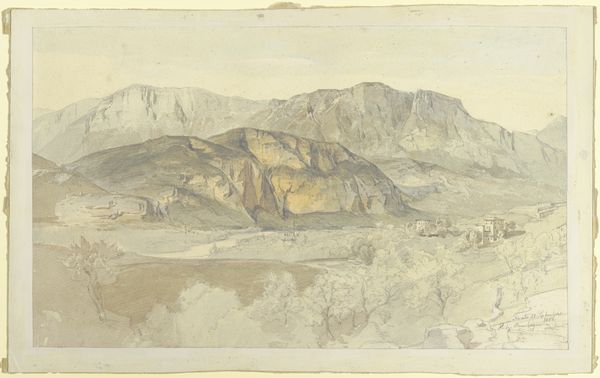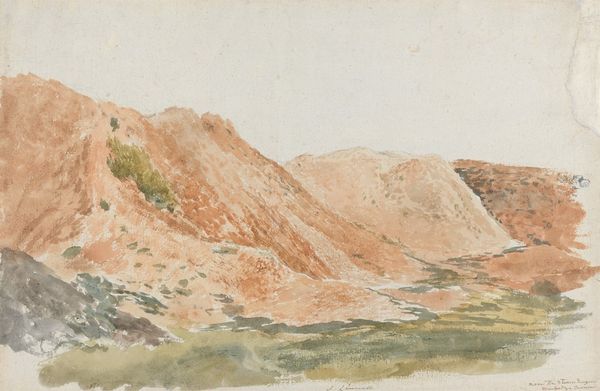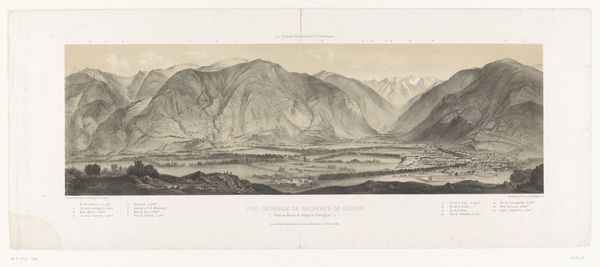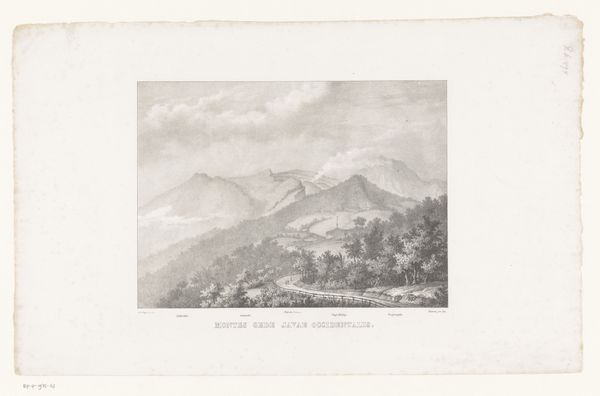
Dimensions: height 290 mm, width 365 mm
Copyright: Rijks Museum: Open Domain
Louis Ducros created this watercolor and pen and brown ink drawing, titled "Reservoir of waterleiding in ruïnes van muur van de Via Egnatia," sometime between 1748 and 1810. Ducros, living in a time of burgeoning interest in classical antiquity, was deeply influenced by the aesthetic and philosophical ideals of his era. The piece reflects the 18th-century fascination with ruins, which were often seen as symbols of the transience of human achievement and the power of nature. Ruins weren’t merely remnants of the past, but rather they evoked a sense of melancholy and reflection on history. Simultaneously, this interest was tied to the rise of European colonialism and the desire to document and possess the landscapes and histories of other cultures. Ducros's careful rendering of the landscape also speaks to his role as a cultural intermediary. He catered to the desires of European travelers seeking romantic and picturesque views of foreign lands. His work reflects, but also shapes, the European gaze on the ‘other,’ imbuing it with layers of longing, power, and the complex politics of representation.
Comments
No comments
Be the first to comment and join the conversation on the ultimate creative platform.
